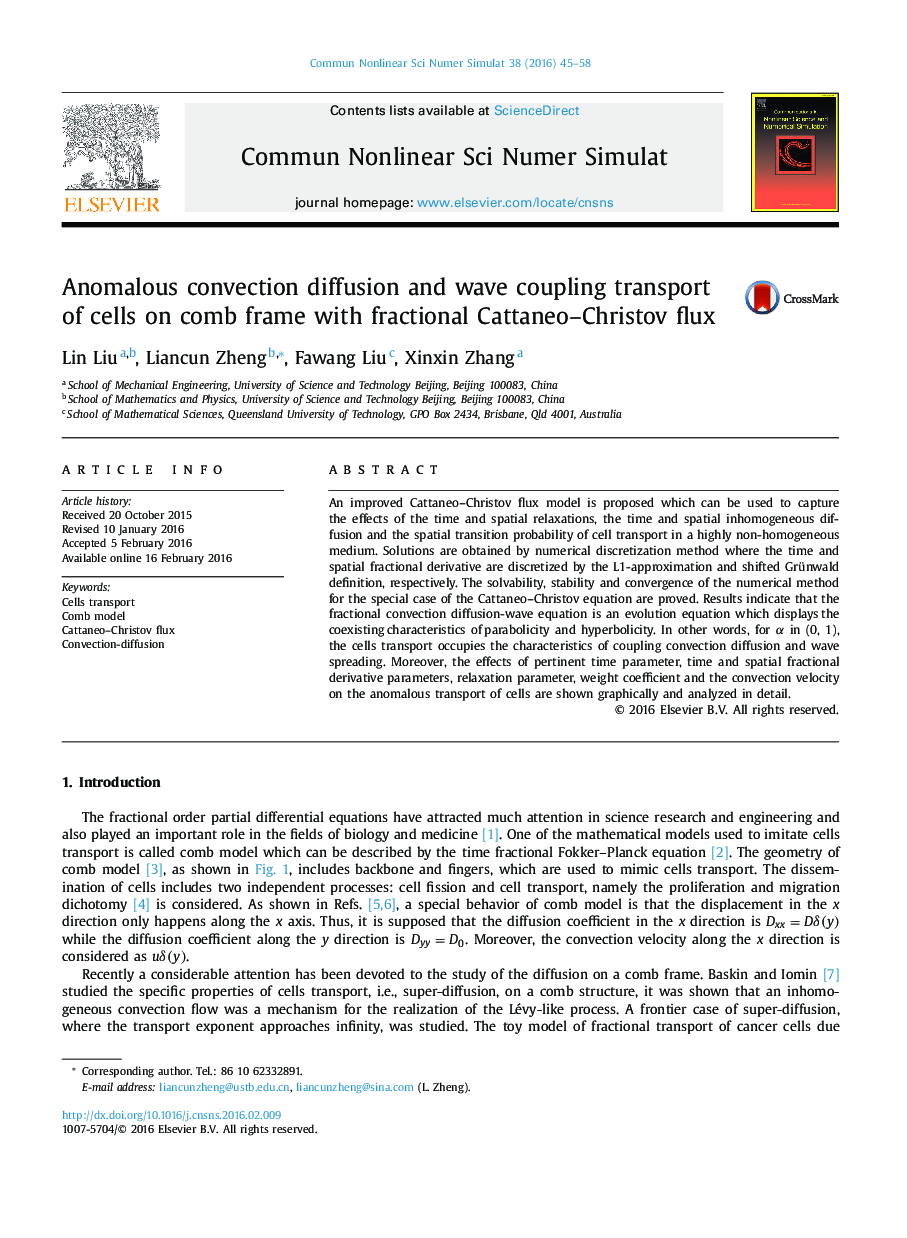| Article ID | Journal | Published Year | Pages | File Type |
|---|---|---|---|---|
| 758554 | Communications in Nonlinear Science and Numerical Simulation | 2016 | 14 Pages |
•An improved Cattaneo–Christov model is proposed for coupling convection diffusion and wave transport of cells.•Time and spatial relaxations, spatial inhomogeneous and the transition probability of cells transport are considered.•Numerical solutions are obtained by numerical discretization method where the L1-approximation and shifted Grünwald definition are been applied.•Results indicated that the fractional convection diffusion-wave equation is an evolution equation.•Effects of pertinent parameters of relaxation, weight and convection velocity on the transport of cells are analyzed.
An improved Cattaneo–Christov flux model is proposed which can be used to capture the effects of the time and spatial relaxations, the time and spatial inhomogeneous diffusion and the spatial transition probability of cell transport in a highly non-homogeneous medium. Solutions are obtained by numerical discretization method where the time and spatial fractional derivative are discretized by the L1-approximation and shifted Grünwald definition, respectively. The solvability, stability and convergence of the numerical method for the special case of the Cattaneo–Christov equation are proved. Results indicate that the fractional convection diffusion-wave equation is an evolution equation which displays the coexisting characteristics of parabolicity and hyperbolicity. In other words, for α in (0, 1), the cells transport occupies the characteristics of coupling convection diffusion and wave spreading. Moreover, the effects of pertinent time parameter, time and spatial fractional derivative parameters, relaxation parameter, weight coefficient and the convection velocity on the anomalous transport of cells are shown graphically and analyzed in detail.
